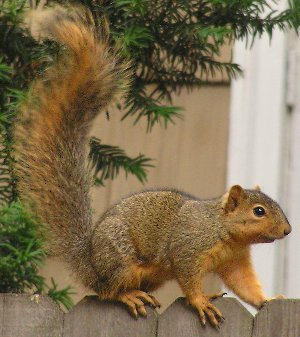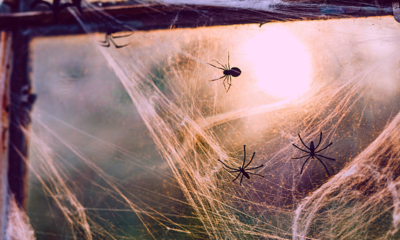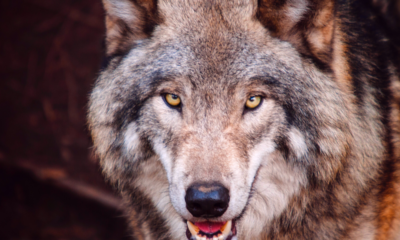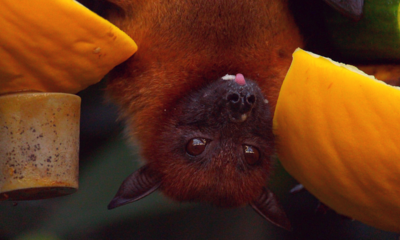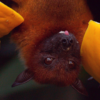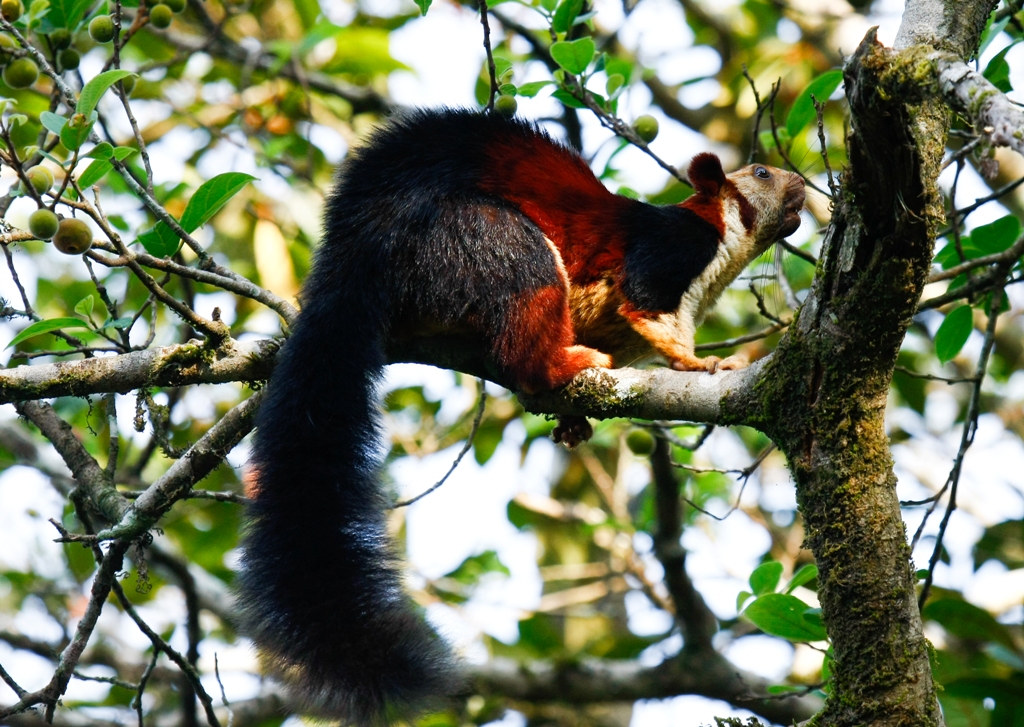
Animals
12 Biggest Squirrel Species In The World
Squirrels are nimble, busy-tail rodents found all across the world. They belong to the Sciuridae family, which mainly includes chipmunks and prairie dogs. There are over 200 species of squirrels in the world. Squirrels range in length from five inches up to three feet!
There is also a rich history of eating squirrels in the US, where people use them in various dishes. Although, squirrel meat has fallen out of favour in recent decades, many Americans still hunt and eat squirrel meat.
Fun Fact: Squirrel Appreciation Day is held every year on January 21 in the United States to help people understand the ecological importance of squirrels. The idea behind this day was given by North Carolina wildlife rehabilitator Christy McKeown in 2001.
Biggest Squirrel Species
Here are the biggest squirrel species that have been discovered and ranked according to their length.
12. Eastern Gray Squirrel

Scientific Name: Sciurus carolinensis
Head and Body Length: 0.98 feet
Location: Canada
The Eastern Gray Squirrels are bushy-tailed rodents with a mixture of brown, black, and white fur. Considered one of the biggest squirrels in the world, gray squirrels are typically 16-20 inches in length, and they can weigh up to 1.5 pounds.
The trees most commonly used by gray squirrels are white oak, American beech, American elm, red maple and sweet gum. These squirrels also build large nests composed of leaves and twigs.
The Eastern gray squirrel is most active during the day and can be seen all year, even digging through the snow in intense cold to retrieve buried nuts. They typically live up to three years in the wild, though some wild squirrels have been found to reach 13 years of age.
11. Tufted Ground Squirrel
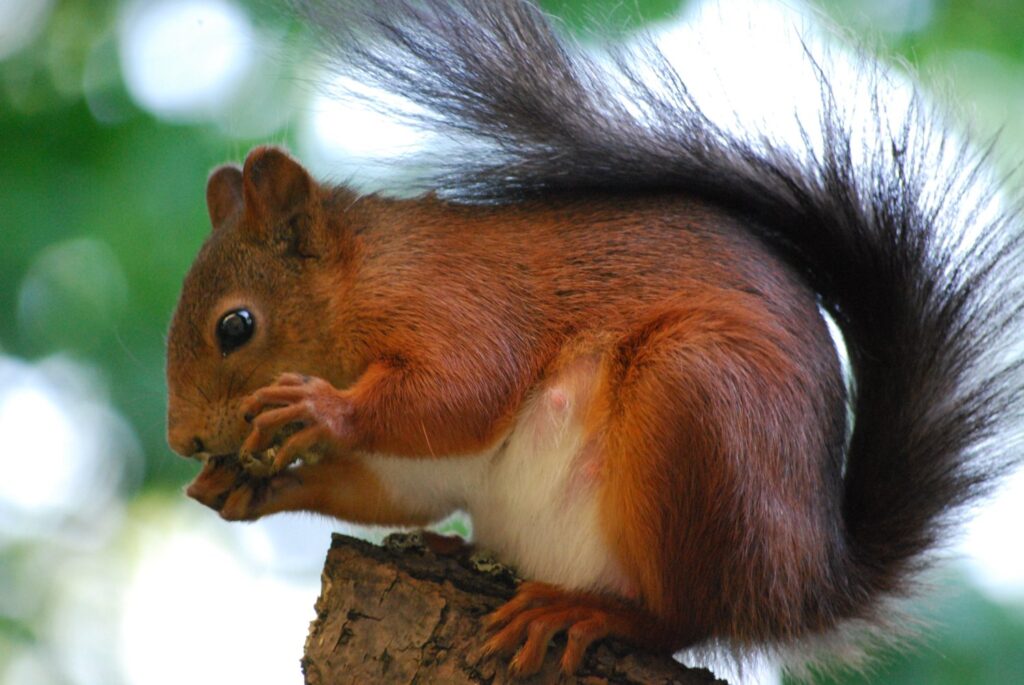
Scientific Name: Rheithrosciurus macrotis
Head and Body Length: Upto 1.16 feet
Location: Borneo Island
This squirrel, found in the jungles of Borneo, has earned the name of ‘vampire’ because of its extraordinary skills. Measuring upto 14 inches and weighing up to 4.4 pounds, the Tufted Ground Squirrel attacks and kills deer to eat their stomach contents, liver and heart.
In order to do so, the squirrel waits on low branches, jumping on passing deer and biting their jugular veins to make them bleed to death. Once the deer dies, the squirrel eats the deer’s internal organs.
Another very remarkable feature of this squirrel is its extremely fluffy tail. The squirrel’s tail is 130 percent the mass of the rest of its body, giving this species the largest tail-to-body ratio of any known mammal.
10. Black Giant Squirrel

Scientific Name: Ratufa bicolor
Head and Body Length: Upto 1.25 feet
Location: India
The beautiful Black Giant Squirrel inhabits tall primary forest and generally remains high in the canopy of the trees. Measuring up to 15 inches and weighing up to 2.8 pounds, the upper parts and tail of this squirrel are jet black.
The Black Giant Squirrel can live up to 10 years or even more and is mostly a solitary creature. The most amazing feature of these creatures is that they create caches of food high up in the trees!
These four-pound species once ranged extensively from Nepal and Assam but their numbers have declined due to the large-scale clearance of primary forest. These squirrels are now a near-threatened species, according to the IUCN Red List.
9. Arctic Ground Squirrel
Scientific Name: Urocitellus parryii
Head and Body Length: Upto 1.25 feet
Location: North America
Arctic ground squirrels are the largest and most northern of the North American ground squirrels. Measuring up to 15 inches and weighing about 3.5 pounds, these squirrels undergo seasonal changes in body mass and lose weight during hibernation.
Inside the burrow of the Arctic ground squirrel is a hibernation chamber, spherical in shape and slightly flattened, and lined with fur, dry grasses and moss. This chamber is insulated so well that when it is freezing outside, the inside temperature is around 20 degrees Celsius more than the temperature outside!
Arctic ground squirrels remain active for only three months of the year, part of which is spent preparing for their next hibernation.
8. Grizzled Giant Squirrel
Scientific Name: Ratufa macroura
Head and Body Length: Upto 1.5 feet
Location: Sri Lanka
With a body length of about 18 inches and maximum body weight of 2.8 pounds, the Grizzled Giant squirrels are named for the white flecks of hair that cover their greyish-brown bodies, giving them a grizzled look.
Owing to habitat loss and poaching, the species has been categorised as near threatened by the Red List and listed under Schedule II of CITES. It is an endangered species listed under Schedule I of the Wildlife Protection Act, 1972.
The most interesting feature of these squirrels is that when they sense danger, they have been observed to flatten themselves against a branch and remain motionless. Overall, these squirrels are very wary and keep themselves well hidden in dense vegetation.
7. Laotian Giant Flying Squirrel
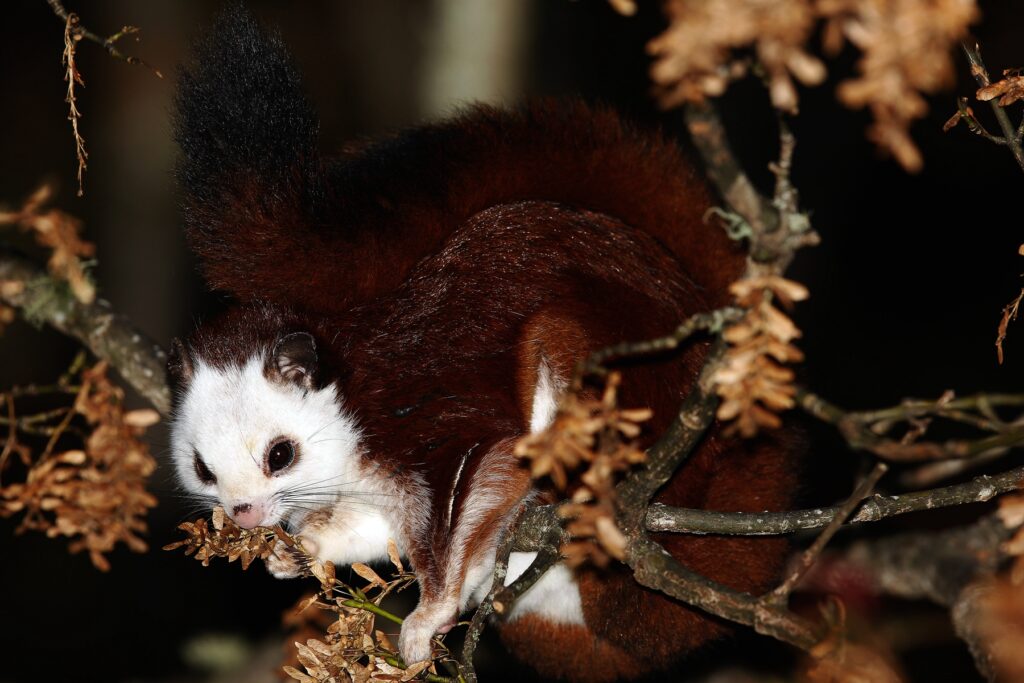
Scientific Name: Biswamoyopterus laoensis
Head and Body Length: Upto 1.5 feet
Location: Laos
Scientists have discovered a new species of giant flying squirrel in China belonging to one of the world’s rarest and most mysterious genera. Weighing nearly four pounds and measuring up to 18 inches, these squirrels don’t actually fly, they glide through air.
The Laotian Giant Squirrels have membranes of fur between their arms and legs, called ‘patagia,’ that act as parachutes that allows them to control their speed while flying.
These squirrels can leap many times their own body length and flights of nearly 300 feet have been recorded. Although their body weight is up to 4 pounds, they can even turn 180 degrees in mid-air!
These squirrels are considered to be excellent at surprise appearances and disappearances and were thought to be extinct in the early 1900s and then reappeared in the 1960s.
6. Rock Squirrel
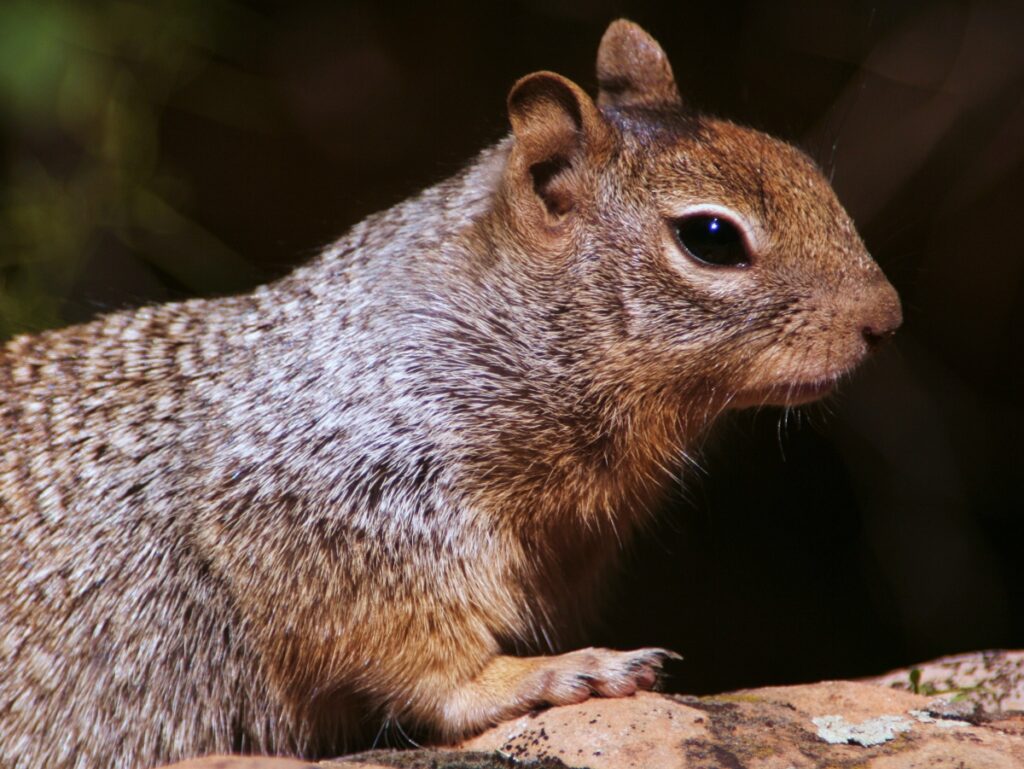
Scientific Name: Otospermophilus variegatus
Head and Body Length: Upto 1.75 feet
Location: Mexico
The rock squirrel has a total body length of 21 inches. However, their massive body length does not include their tails, which can be as long as their body! The maximum body weight of these squirrels is 1.45 pounds.
Although they look very similar to tree squirrels, rock squirrels rarely climb trees, and they typically build burrows rather than nests. To save themselves from big predators and to store food for hibernations periods, rock squirrels dig small burrows as shelters and live in them.
Their diet consists of plant materials, such as fruit, seeds, and nuts, as well as insects and earthworms. Moreover, the rock squirrels are very notorious and have been known to get into backpacks, lunch pails, and trash cans, and to steal food right out of visitors’ hands.
5. Abert’s Squirrel
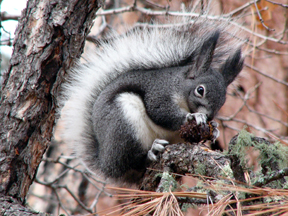
Scientific Name: Sciurus aberti
Head and Body Length: Upto 1.75 feet
Location: Central Mexico
The Abert’s squirrel are concentrated in the mountainous regions of the southwestern United States and in north central Mexico. The most distinctive feature of these squirrels are their big tufted ears.
The most favourite food of Abert’s squirrel is the cones of Ponderosa Pine trees. In fact, they even build nests high up in Ponderosa pine trees and their nests look similar to a large, messy bird nest. The maximum body weight of Abert’s squirrels is 1.36 pounds.
The Abert’s are sweet-toothed squirrels and during early spring, they have an interesting addition to their diets. They cling to the side of a boxelder tree and lick the sweet sap flowing from it. This syrup tastes similar to the maple syrup and it is believed that they have developed a taste for this.
4. Red Giant Flying Squirrel
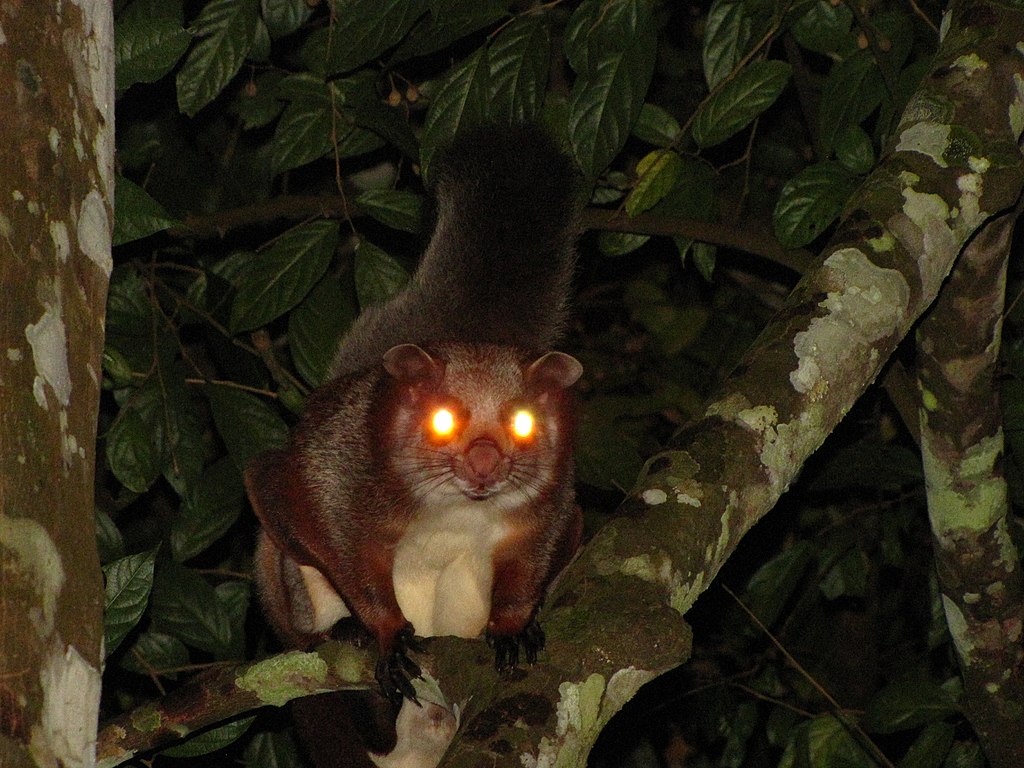
Scientific Name: Petaurista petaurista
Head and Body Length: Upto 1.79 feet
Location: Southeast Asia
As the name suggests, the Red Giant Flying Squirrel is among the biggest squirrels in the world. These squirrels have the highest diversity in terms of species richness and population diversity in Southeast Asia.
They have a membrane of skin between their legs and arms, which is used to glide between trees. With a maximum body weight of 7.1 pounds, it is able to glide for long distances. There have been reports that these squirrels can glide distances up-to 250 feet or even greater! Moreover, they can even glide at 40-60 degree angles!
The most interesting feature of this squirrel is that it is nocturnal and does not hibernate. It in fact, migrates to different areas with food and also in search of more food.
3. Groundhog
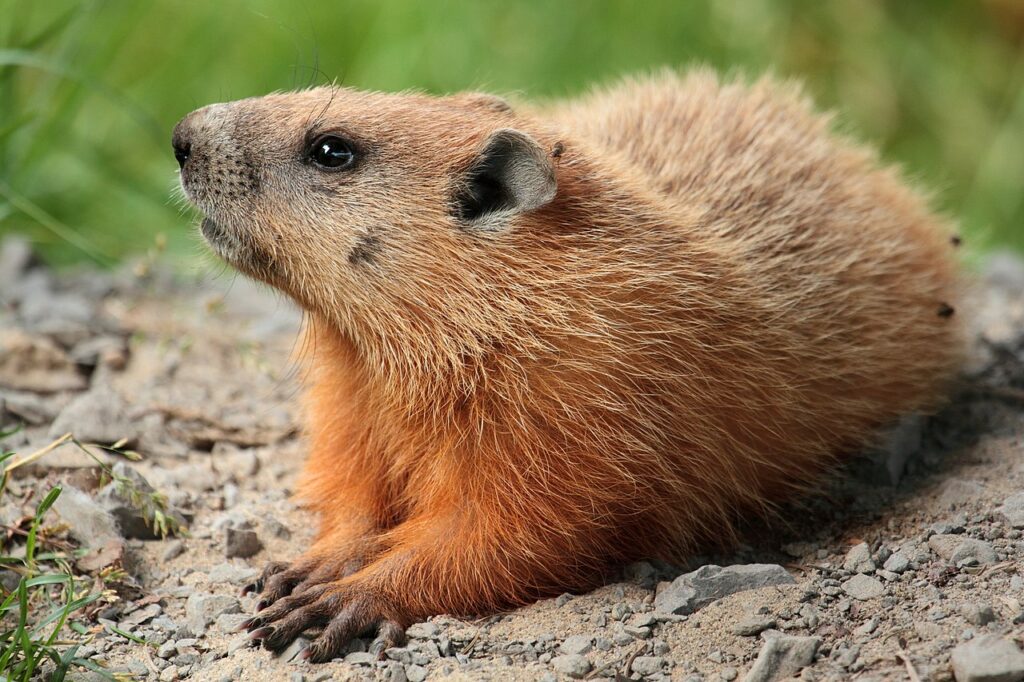
Scientific Name: Marmota monax
Head and Body Length: Upto 2.25 feet
Location: United States
The Groundhogs belong to the group of large ground squirrels known as marmots. Measuring upto 27 inches, these squirrels live a feast or famine lifestyle. This means that they gorge themselves up all summer and create plentiful reserve of fat, after which they snooze until spring, drawing their sustenance from food fat.
The maximum body weight of 8.5 pounds, the groundhog can dug burrows as long and huge as 66 feet with multiple exits and entrances! And their burrows even have separate rooms for defecation!
Every year, Groundhog Day is celebrated on February 2 in the United States. Tradition says that if a groundhog sees its shadow that day, there would be six more weeks of winter that year.
2. Fox Squirrel
Scientific Name: Sciurus niger
Head and Body Length: Upto 2.3 feet
Location: United States
The Fox squirrel can reach a length up to 27.6 inches and a weigh between one to three pounds. Depending upon their geographical location, they have brown-grey, brown-yellow, or brown-orange fur on their upper body.
Fox squirrels are known for their long bushy tails and their strong hind legs which enables them to leap far. They have a maximum body weight of 1.76 pounds and have two breeding seasons each year.
The main threat to the fox squirrel population is the destruction of their habitats. Habitat loss has been significant and it has been estimated that only 10-20% of these squirrels have their habitats still intact.
1. Indian Giant Squirrel

Scientific Name: Ratufa indica
Head and Body Length: Upto 2.8 feet
Location: India
Indian Giant Squirrel is the biggest squirrel species in the world. It can weigh up-to 4.4 lbs and the average adult can grow as long as 2.8 feet long! It is widely distributed from the evergreen to moist and dry deciduous forests of Western and Eastern Ghats and the central Indian hills.
This squirrel spends most of its time in trees and makes its shelter within holes in the trees. While moving from tree to tree, the Indian Giant Squirrel can take a leap of up to six metres or even more! These squirrels are omnivorous, feeding on fruits, flowers, nuts, bark, bird eggs, and insects.
These squirrels can live upto 20 years! However, due to rapid deforestation, the already limited habitat of these squirrels is being reduced.
Trisha Katyayan is an experienced journalist who has print-media background and loves to research, organize and curate factual information in a presentable way.


